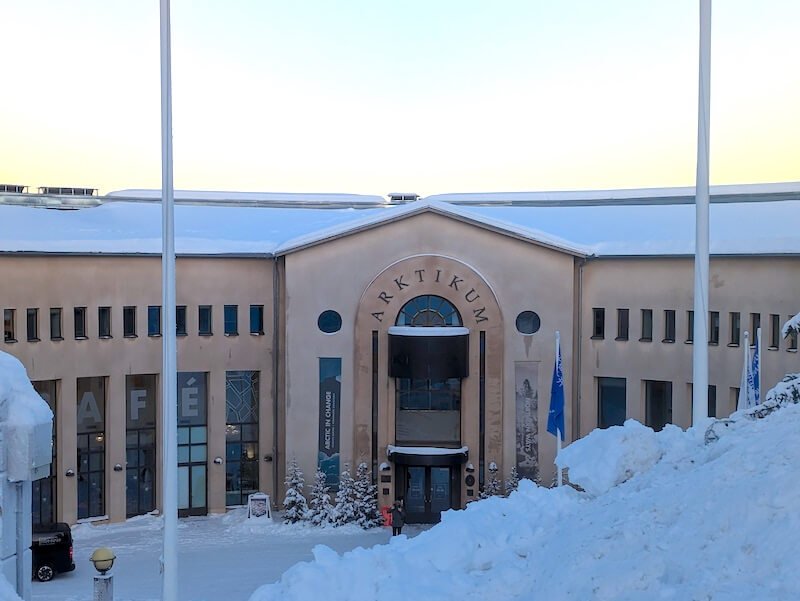The northern Finnish city of Rovaniemi is most known for its huge array of winter adventure activities, from dog sledding to Northern lights chasing to snowmobiling and beyond.
But no matter the season, any trip to the ‘capital’ of Finnish Lapland should include some time enjoying the lovely city center of Rovaniemi.
Arktikum is really two museums in one: both the Arctic Center and the Provincial Museum of Lapland operate out of the same (gorgeously designed) building, offering their own exhibits.
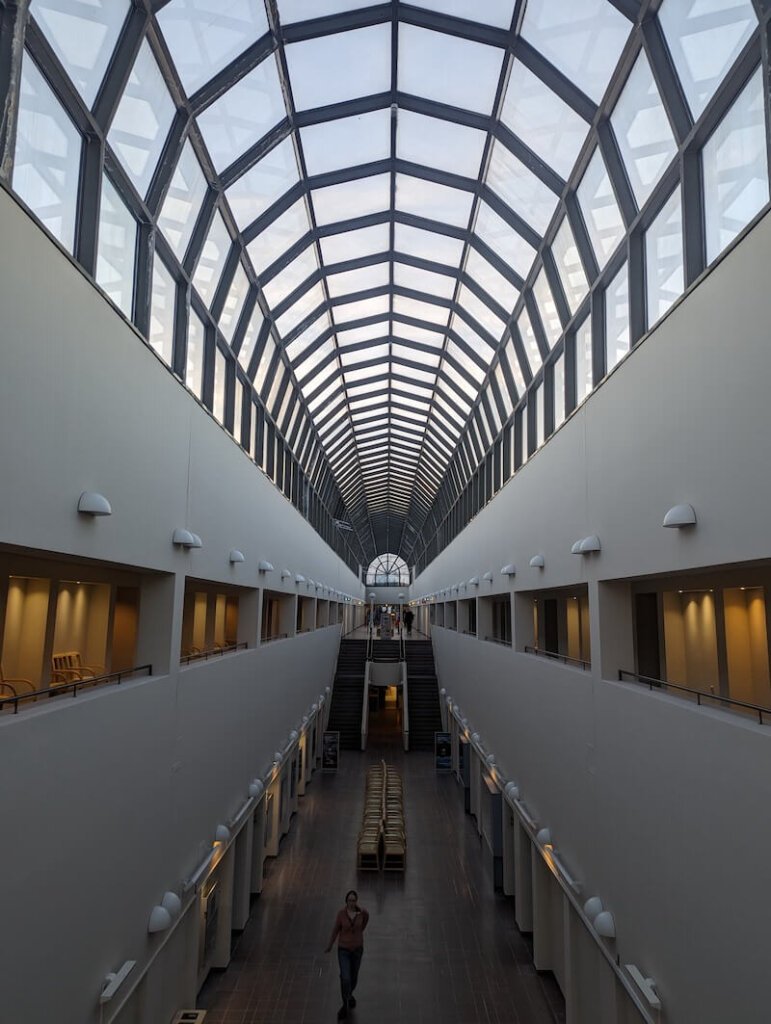
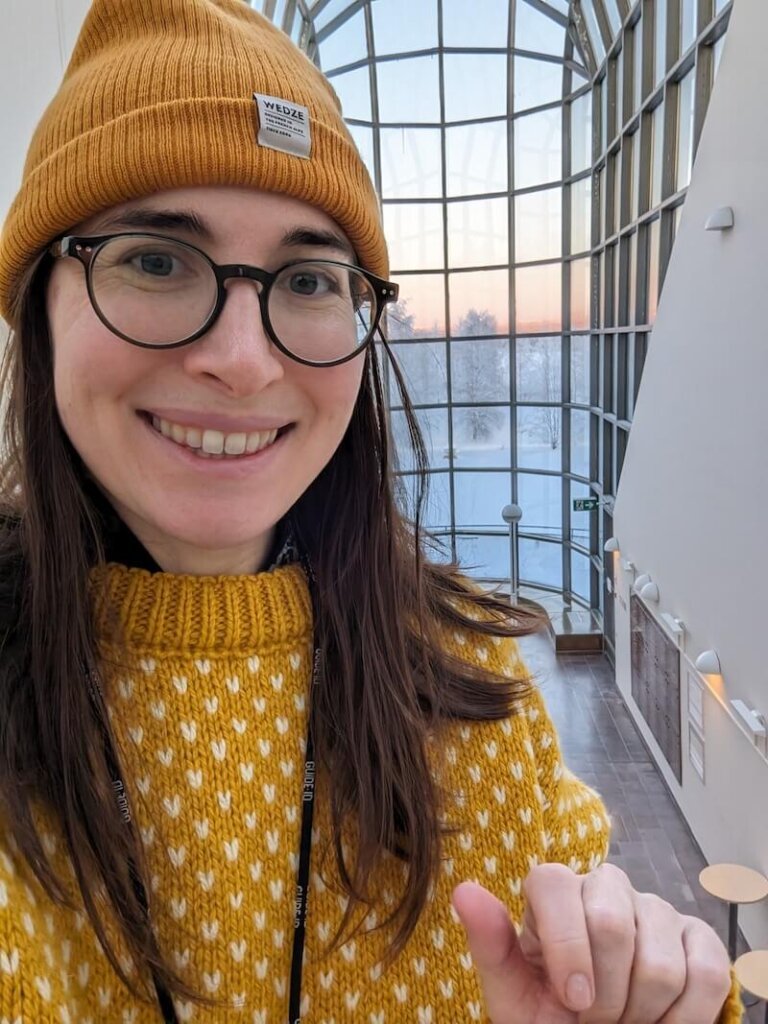
After my January 2024 visit to Arktikum, I was incredibly impressed by this small but impactful museum and thought I’d write a quick guide for those on the fence, who aren’t sure about if it’s worth visiting Arktikum.
The short answer: yes, absolutely, I think visiting Arktikum is worth it for basically every kind of traveler.
It has something for everyone. Those interested in culture, citizen scientists, families, design geeks: everyone will be pleased with some aspect of Arktikum, if not the entire thing!
Arktikum Hours and Admission Costs
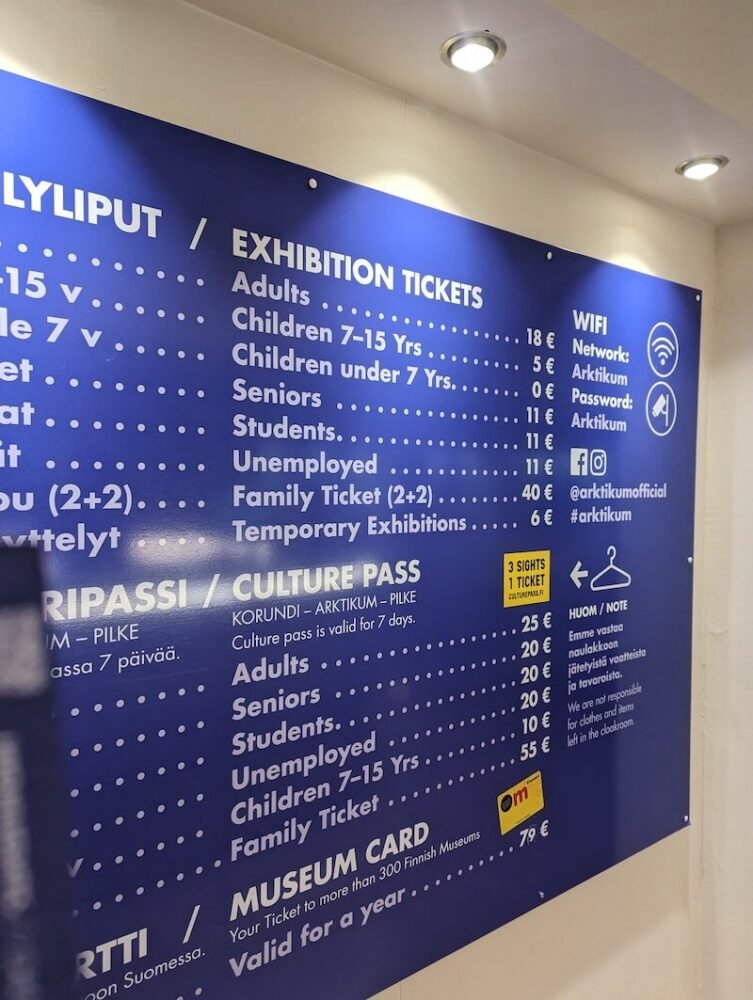
Arktikum is open from 10 AM to 6 PM daily every day except Monday, making scheduling your visit here quite easy.
It’s also within walking distance of pretty much anywhere in the Rovaniemi city center, so visiting isn’t hard if you’re already in town.
Admission costs 18 euros for an adult, but you can buy a combined pass called the Rovaniemi Culture Pass for 25 euros.
Booking the pass also grants you admission to Pilke (a science center dedicated to Finnish forests, known for its efficient design and sustainable efforts) as well as the Korundi Culture House.
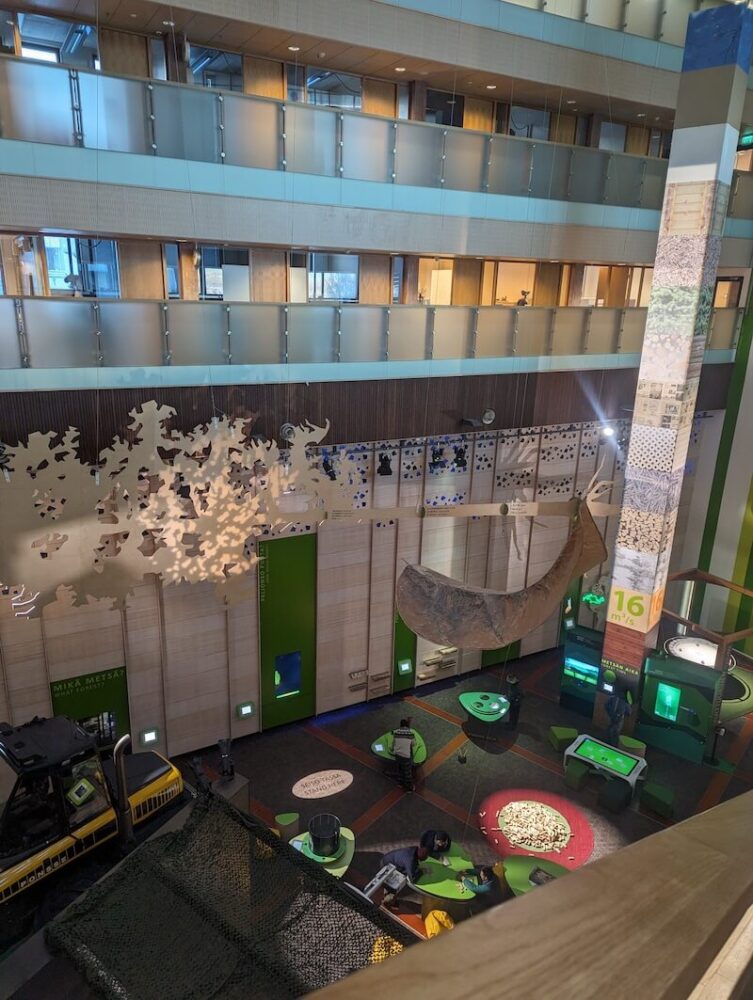
Pilke costs 7 euros for an adult ticket and Korundi costs 11 euros per adult, offering a total savings of 11 euro if you do plan to visit all three sites.
In my opinion, booking the trio via the Culture Pass offers a good deal and encourages you to make the most out of your time in Rovaniemi by paying for everything upfront and then getting to space out your visits over the course of a week.
Pilke is literally right next to Arktikum as well, so it’s extremely easy to visit both of the museums together, which is what I chose to do (and save Korundi for another day).
Tip: I booked my Culture Pass online, but there was really no need to — you can just buy it at the first one of the three museums included you visit and save the 1.50 euro service fee for online bookings.
Highlights of Arktikum

One of my highlights of visiting Arktikum was checking out the “Arctic in Change” exhibit, curated by the Arctic Science Center.
It focused on the challenges facing the Arctic’s climate and its residents — human and wildlife alike — due to global warming.
I liked how it was informative and approachable, with interactive elements that not only appealed to me as an adult but would also be excellent for kids.
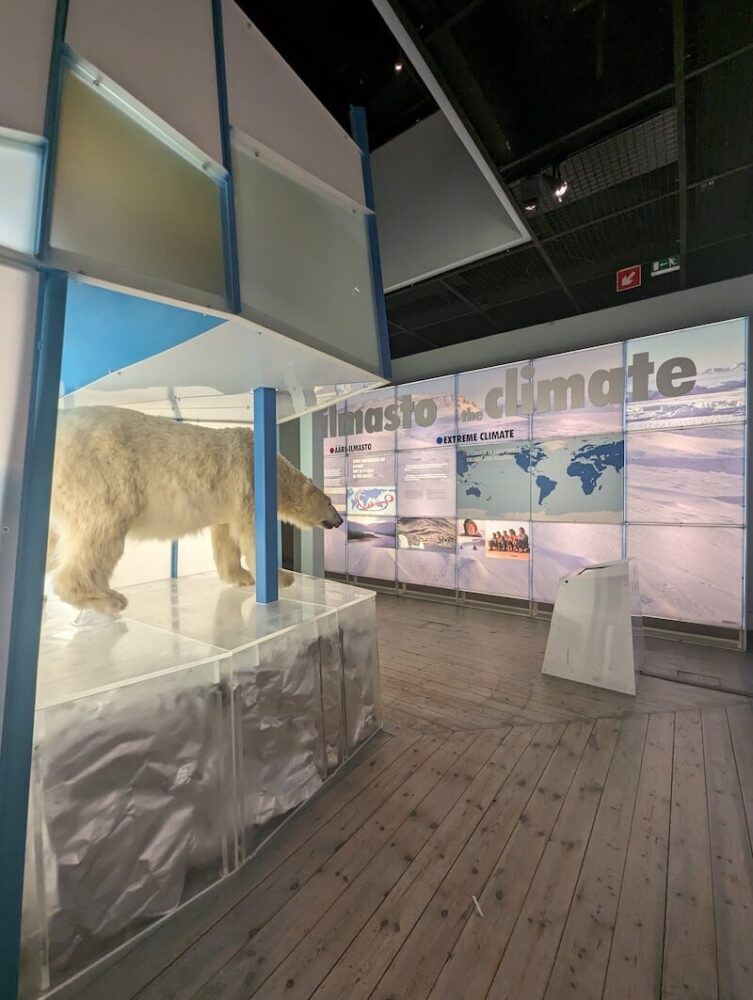
There’s also a permanent exhibit about the aurora borealis, which is endlessly fascinating to me.
Seeing the Northern lights is one of my favorite parts about visiting the Arctic — I’ve chased the lights all over the region, from Abisko to Tromso to Rovaniemi and beyond.
While I know a lot about the science of what causes the aurora borealis, I thought it laid it out in a really approachable, easy-to-understand way that would be great for curious adults and older kids alike.
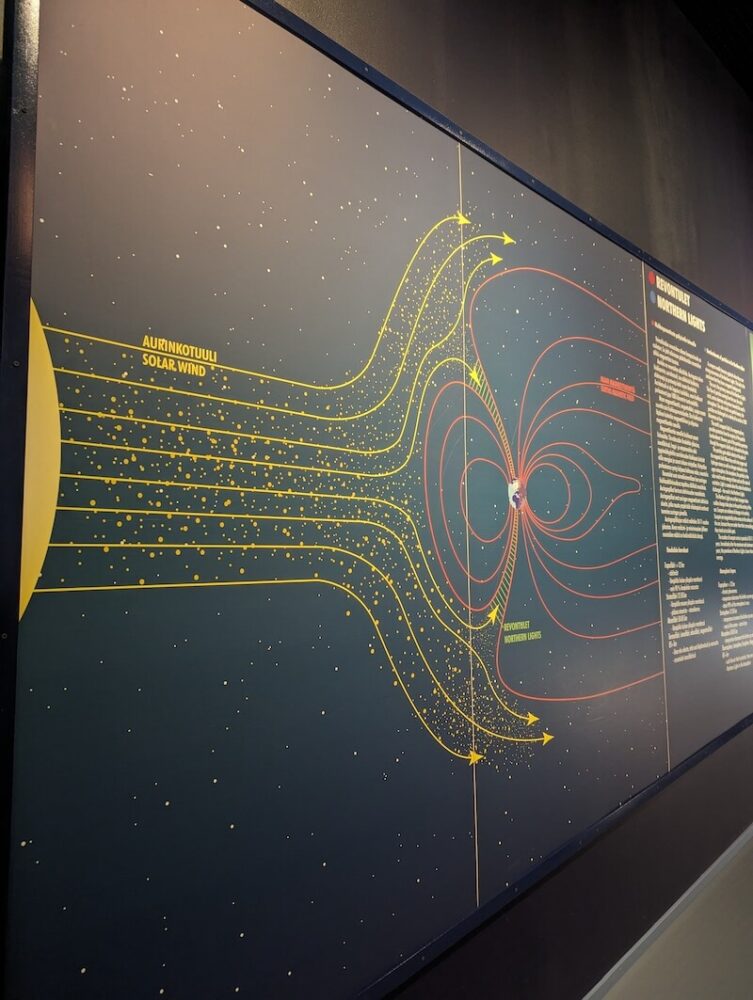
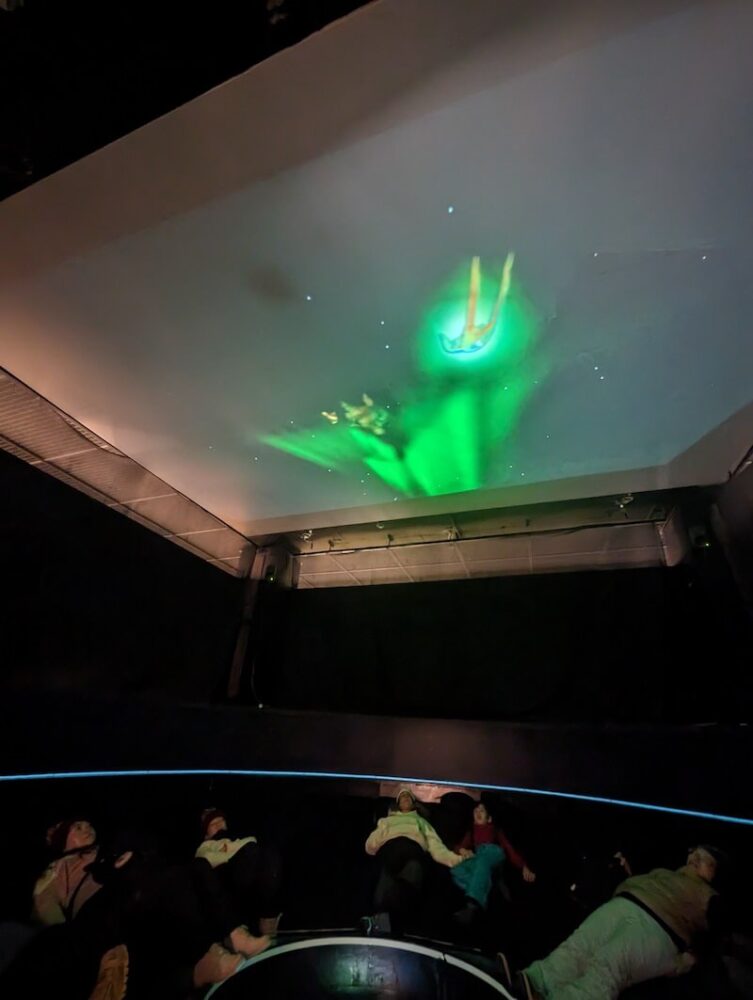
But remember, Arktikum isn’t just a science museum: it’s also co-run by the Provincial Museum of Lapland, so there’s also a big focus on the people as well as the nature and science of the region.
There were several culture-focused exhibits spread across two floors (on an off-hand note, I noticed that the left-hand side of the museum focused on science whereas the right-hand side of the museum focused on culture).
I especially liked the permanent cultural exhibit focused on the inhabitants of Lapland — of course, its human residents as well as its animal ones.
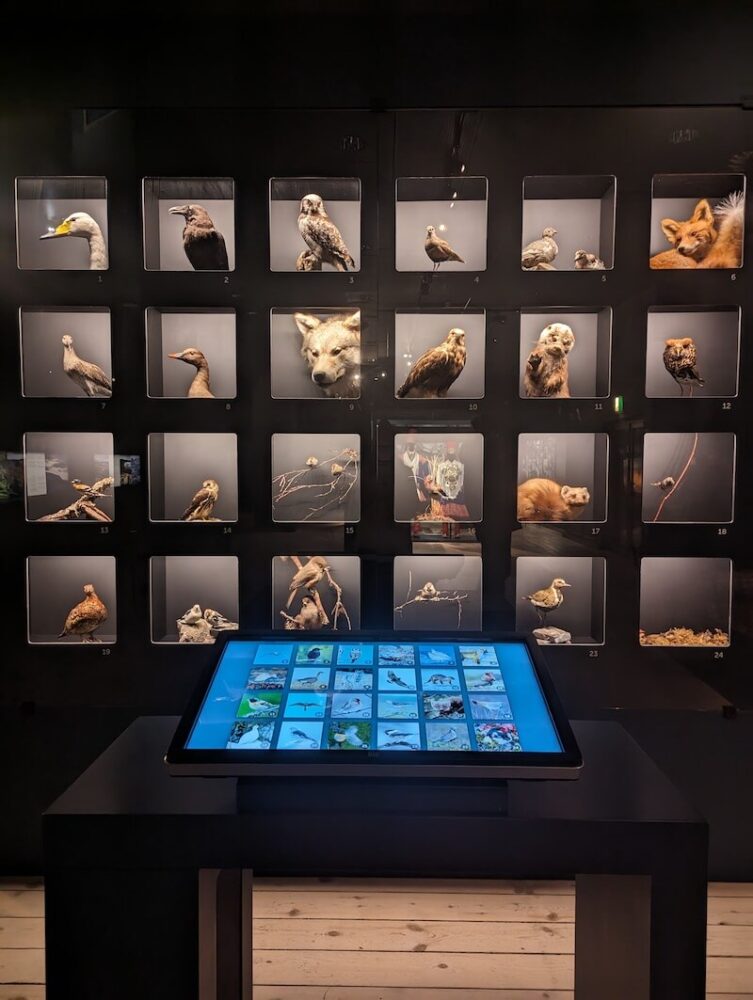
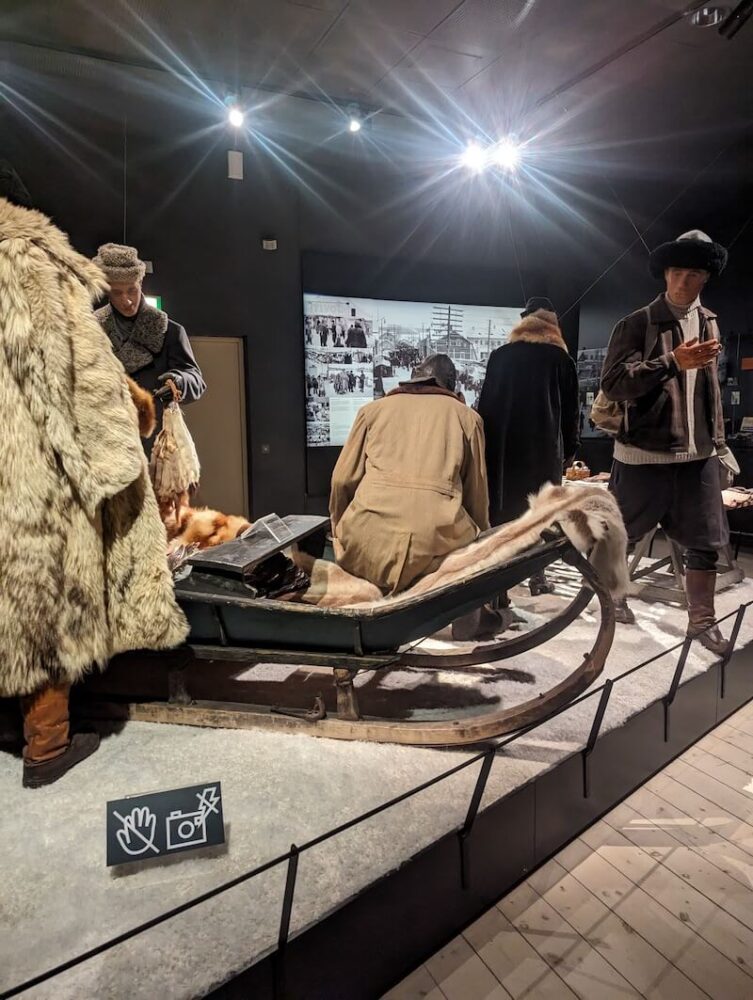
But my personal favorite highlight of the Arktikum Museum was seeing the temporary exhibit about Sámi design, “Duodjebálgát – Paths of Duodji” (note: duodji is the word for Sámi handicrafts).
It focused on the artistic works of two Sámi artists and sisters, Birit and Reetta Tornensis, and their link between their work and their heritage.
If you don’t already know, the Sámi are Lapland’s Indigenous people, a group that transcends national borders and spans northern Norway, Sweden, Finland, and some of Russia.
Sámi culture was once pushed to the margins of society — like many Indigenous peoples around the world, they were violently oppressed, having their language and traditional dress banned, among other violations.
Now, there’s more cultural understanding towards Sámi people: there are language nests dedicated to preserving Sámi language and Sámi designs are highlighted, valued, and protected.
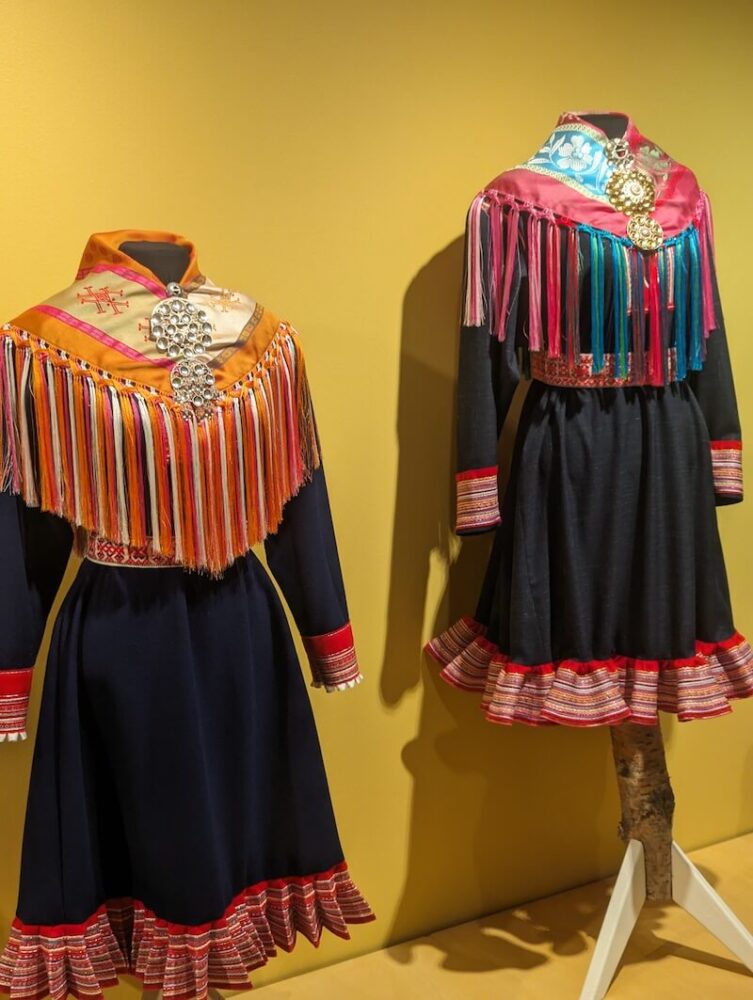
At the exhibit, I learned about the origin and significance of Sámi textiles historically as well as what modernization means for Sámi artisans and craftspeople.
One thing I thought was quite cool was how Sámi designs are being protected from intellectual property theft with certifications being issued to indicate Sámi authentic artistry.
There are two levels:
- items that are Sámi designed (Sámi Made) which have to have an idea originating from a Sámi designer but can be fully or partially machine-made
- items that are Sámi crafted (Sámi Duodji) which means that they were hand-made by a Sámi artist in traditional methods.
This exhibit is only open until April 7, 2024, at which point it will be replaced by a new exhibit, so visit Arktikum soon if you can!
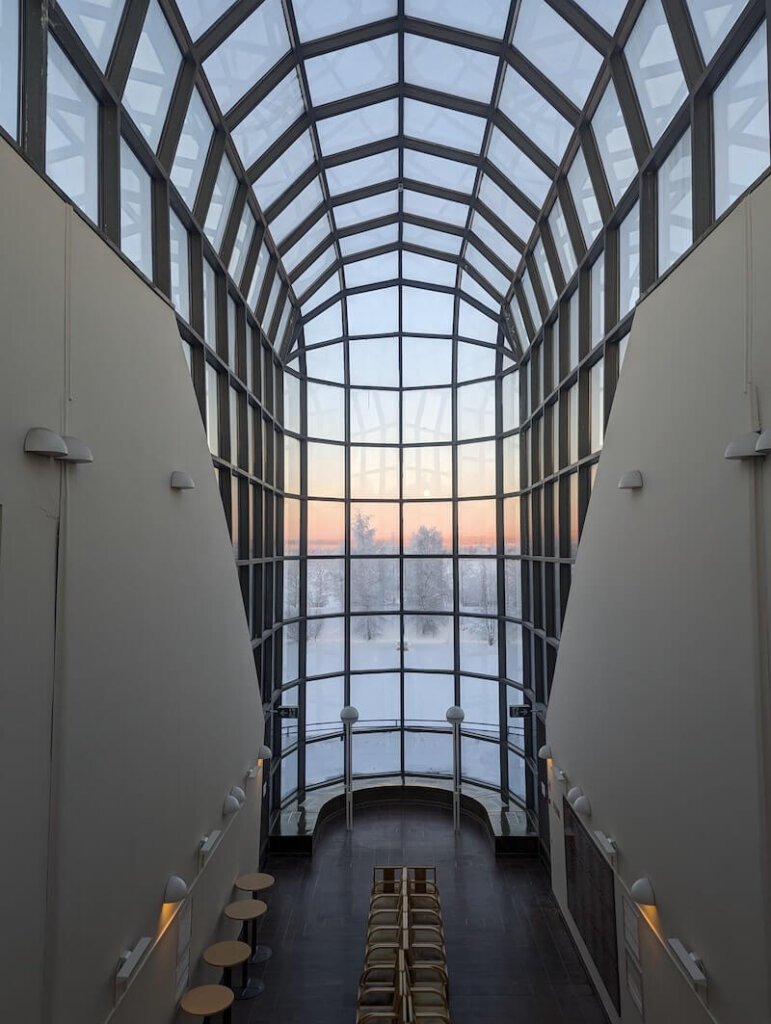
Another highlight is of course the gorgeous architecture and design of the museum!
It was dreamed up by Danish architect Claus Bonderup, who won an international architecture contest in order to design the museum in the 1980s.
It’s been a key piece of Rovaniemi’s architecture scene ever since and is one of the most unique buildings in the city.
FAQ About Visiting Arktikum
Is the museum family-friendly?
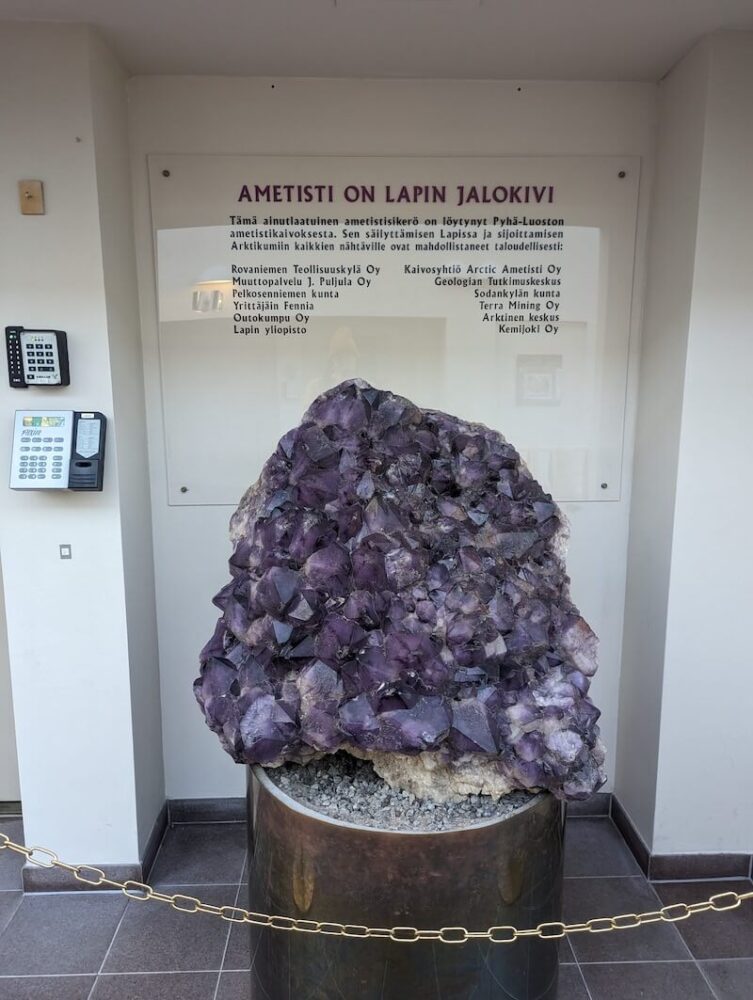
I’m not a parent, but I think so! In my opinion, Finnish people are great at integrating children into all aspects of society, rather than solely creating kid-centric spaces.
There are aspects of the museum that will delight some of the youngest travelers — the aurora display, the interactive animal exhibits, etc. — as well as older kids who will understand more of the science and cultural aspects of what the museum is trying to teach.
What amenities are there at the museum?

There’s a café with a daily lunch buffet (that my friend who lives part-time in Rovaniemi loves) for 15 euros.
I didn’t try it when I was there as I had already eaten lunch, but she said it’s really good and a great value.
There’s also a free-to-use coatroom area, a gift shop with great souvenir options, free lockers, and bathrooms as part of the museum.
Do you need a guide for the museum?
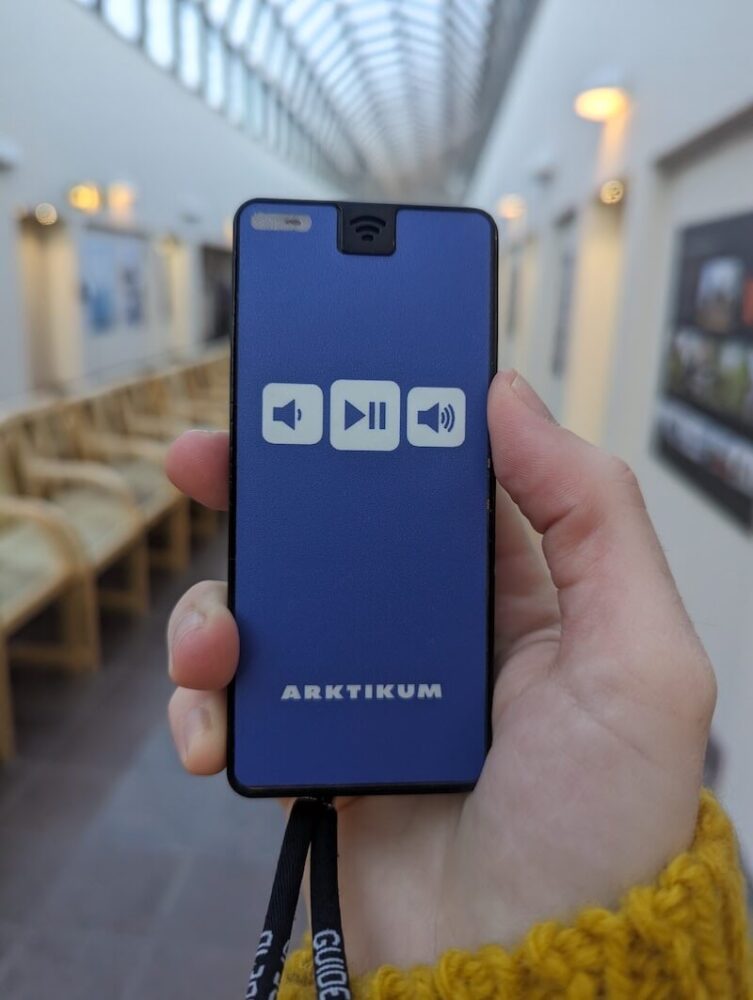
It’s not necessarily — the museum is very well curated and there’s no need for a guide to take you around the museum.
There are free audioguides provided for the museum in a variety of different languages if you want!
How long do you need at Arktikum?
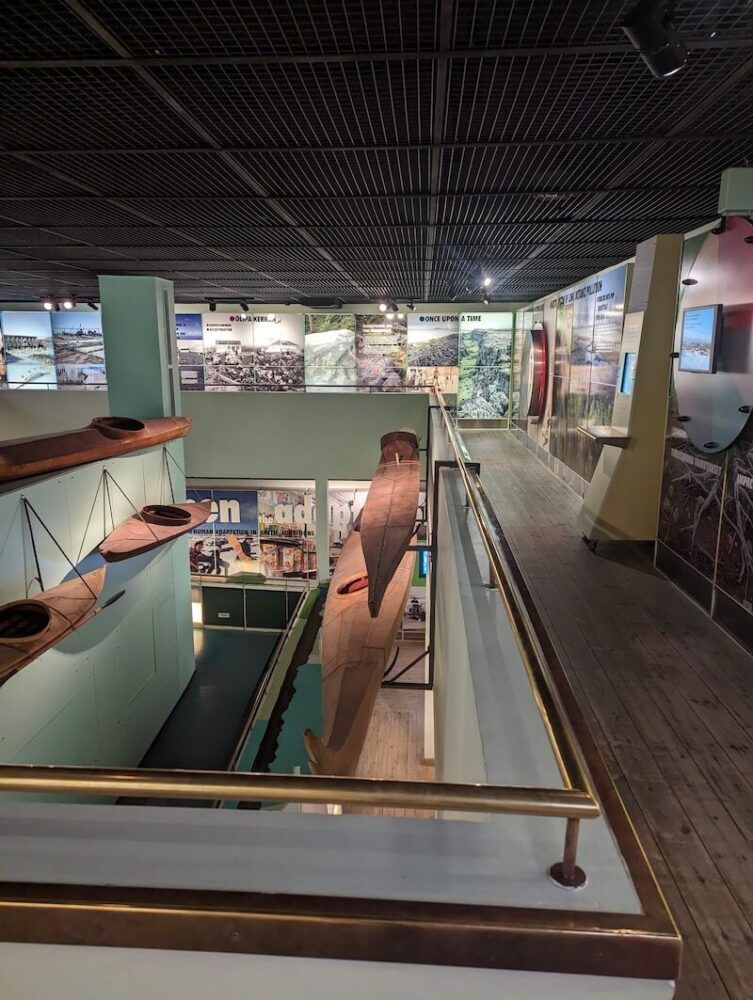
This all depends on your museum speed!
I spent about an hour there, but I have ADHD, I read really quickly, and I was already familiar with several aspects of what the museum covers, since I’ve traveled a lot around the Arctic.
If you want to really soak up every exhibit, I’d estimate two or possibly even three hours including a lunch or coffee break.
Allison Green is a former teacher who has been travel blogging since 2016. She has a Masters in Teaching and a B.A. in English and Creative Writing. Her blog posts merge her background as an educator with her experience traveling to 70+ countries to encourage ethical, meaningful travel. She has been a speaker at the World Travel Writers Conference and her writing, photography, and podcasting work has appeared in National Geographic, CNN Arabic, CBC Canada, and Forbes, amongst others. Now a full-time traveler, she has lived in Prague, Sofia, New York City, and the San Francisco Bay Area.
